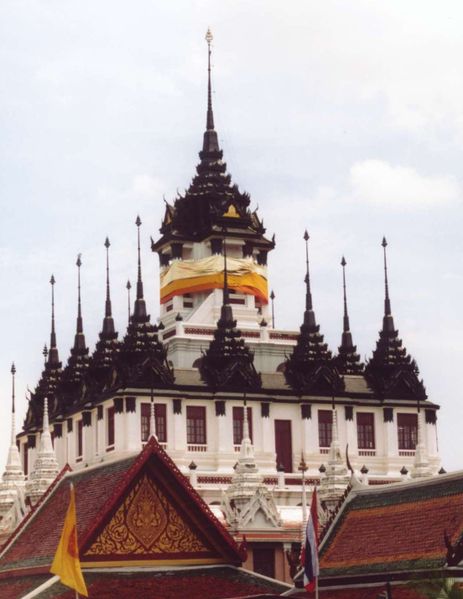(Wat Som)

Wat Somanasvihara Rajaworavihara (Wat Som) is located on Phadung Krungkasem Road and canal on the Nang Loeng market side. King Rama IV ordered the construction of the temple in 1853 to honor and make merit for Princess Somanas Wattanawadee Phra Borom Rajathevee. The temple has thick and high walls. There are two lines of sema, or boundary stones, as there are at Wat Makutkasattriyaram.
The gables of the phra ubosot are a blending of the Thai and the Chinese architectural styles. Inside there are murals that were painted by artists in the reign of King Rama IV showing scenes from the scriptures, the lives of the Buddha, and senior monks looking at a corpse. On the door and window panels there are pictures of the Seven Gems and other scenes and in the monks' residences there are paintings on glass in the Chinese style. All these are of considerable interest.










